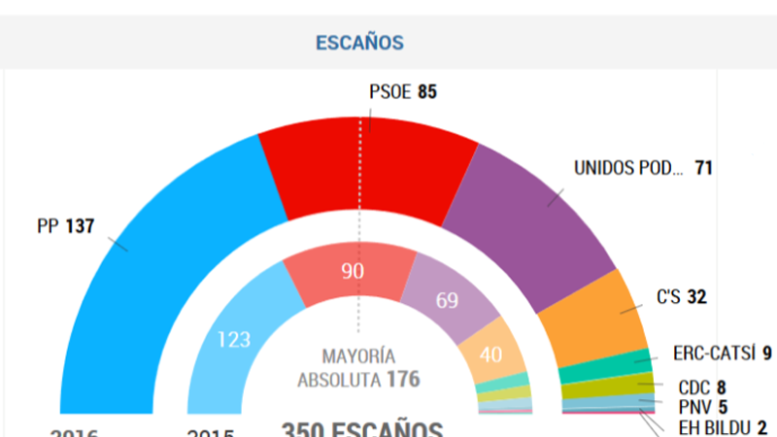• Best-case scenario: Spain will have a new government by early August
• If parties cannot quickly agree coalition accord, process could drag on longer
Given that no party partipating in the 26th June general election won an absolute majority of 176 seats in Spain’s 350-member Chamber of Deputies, the country’s political parties are now jockeying to come up with coalition formulas that will deliver enough seats to allow either the conservative Partido Popular (PP) or the Socialist party (PSOE) to govern Spain in coalition for the next four years.
No resolution is expected for several weeks, however, since by law Congress will not be seated until 19th July, after which the lower house of Parliament must go through set administrative and protocol procedures prior to Spain’s Head of State, King Felipe VI, selecting a candidate to stand for an investiture vote before the full Congress.
The entire process of electing a new prime minister will take at least until the end of July or early August and if the parties cannot come to a firm agreement, as was the case in the negotiating process following the 20th December general election, it could drag on through the summer and into September.
Here’s how the best-case scenario shapes up:
19th July:
► At 10:00 am, both chambers of Parliament convene, Deputies and Senators take their seats
► First order of business: Elect President and members of the Mesa of both Congress and Senate
► Authorize legislative work in July and August (normally, Parliament not in session)
► Decide seating arrangement for parliamentary groups
20th-25th July:
► Head of State, King Felipe VI, begins round of contacts with parties to ascertain their preferences regarding formation of a new government
28th July – 3rd August:
► King selects candidate to form government
► First Investiture Plenary session begins with debate, followed by vote requiring absolute majority on first round, simple majority on second round.
► Read More in Spanish at La Vanguardia and 20minutos …


